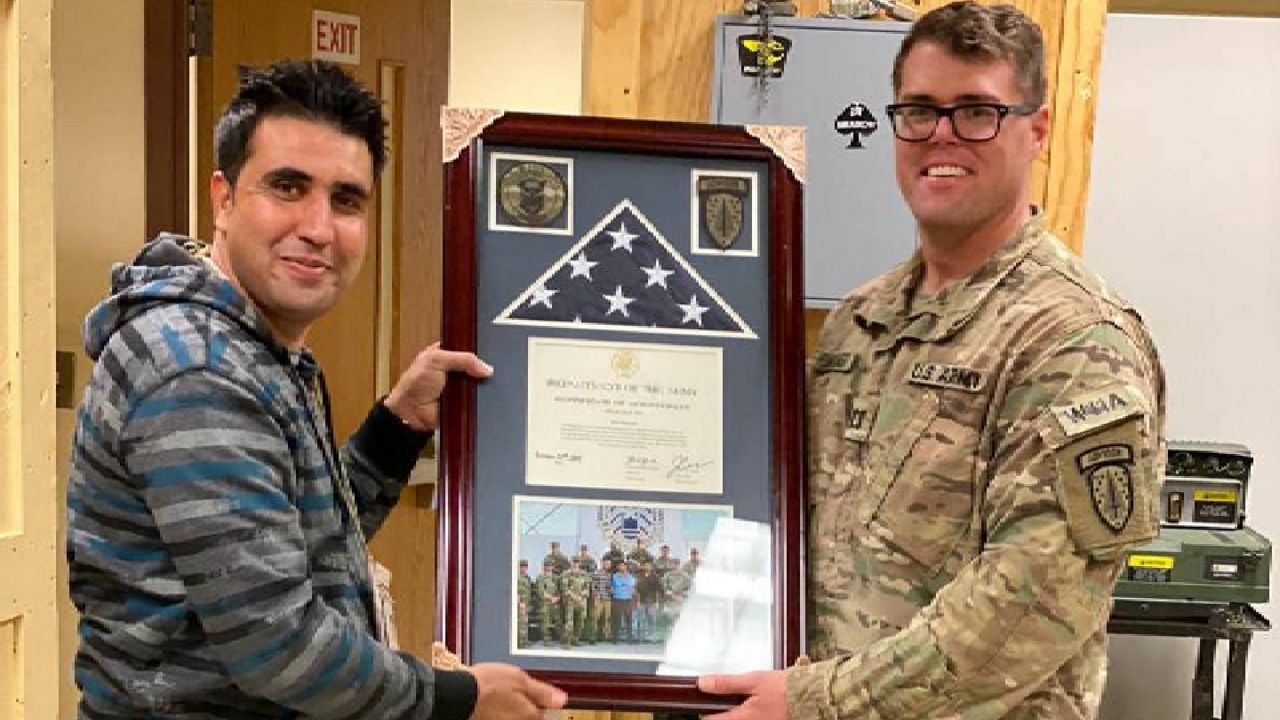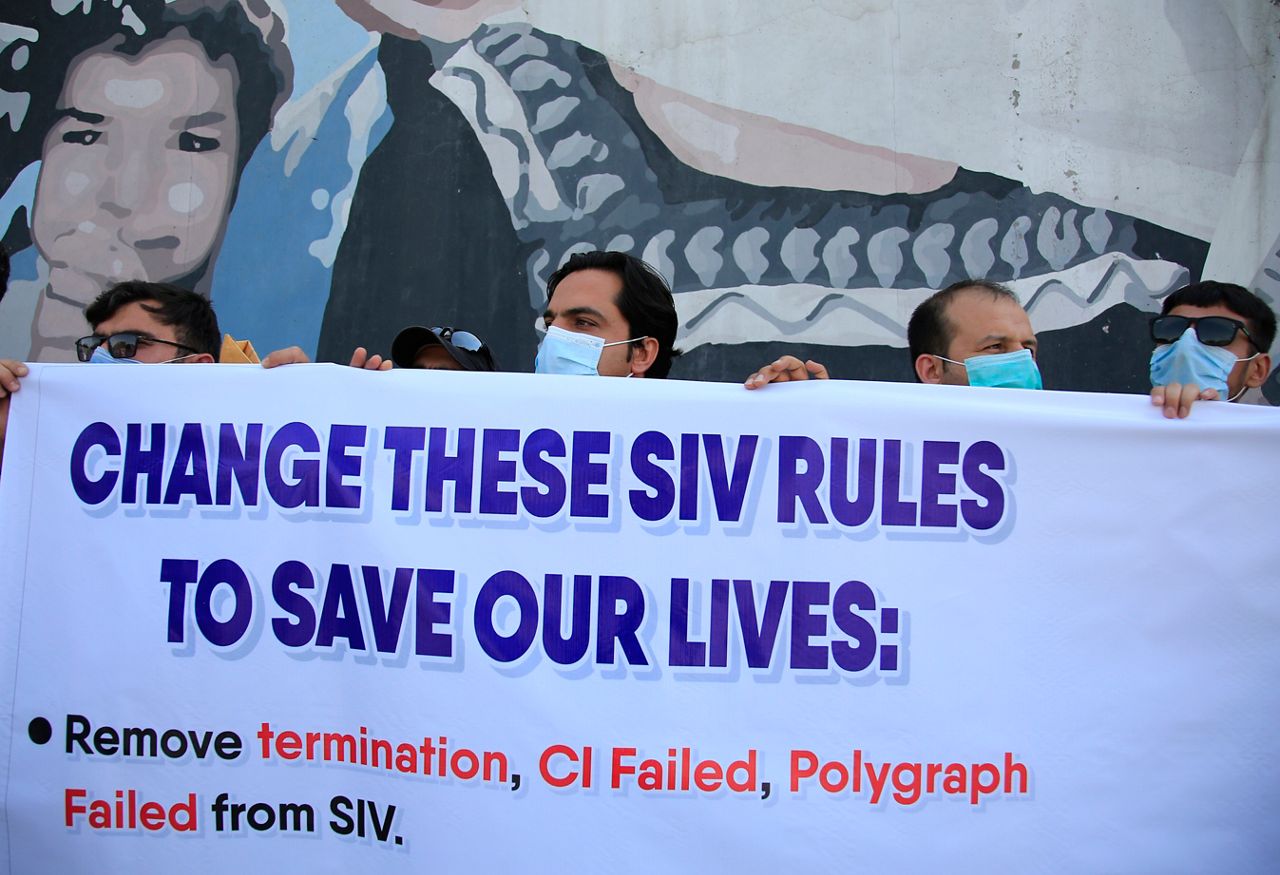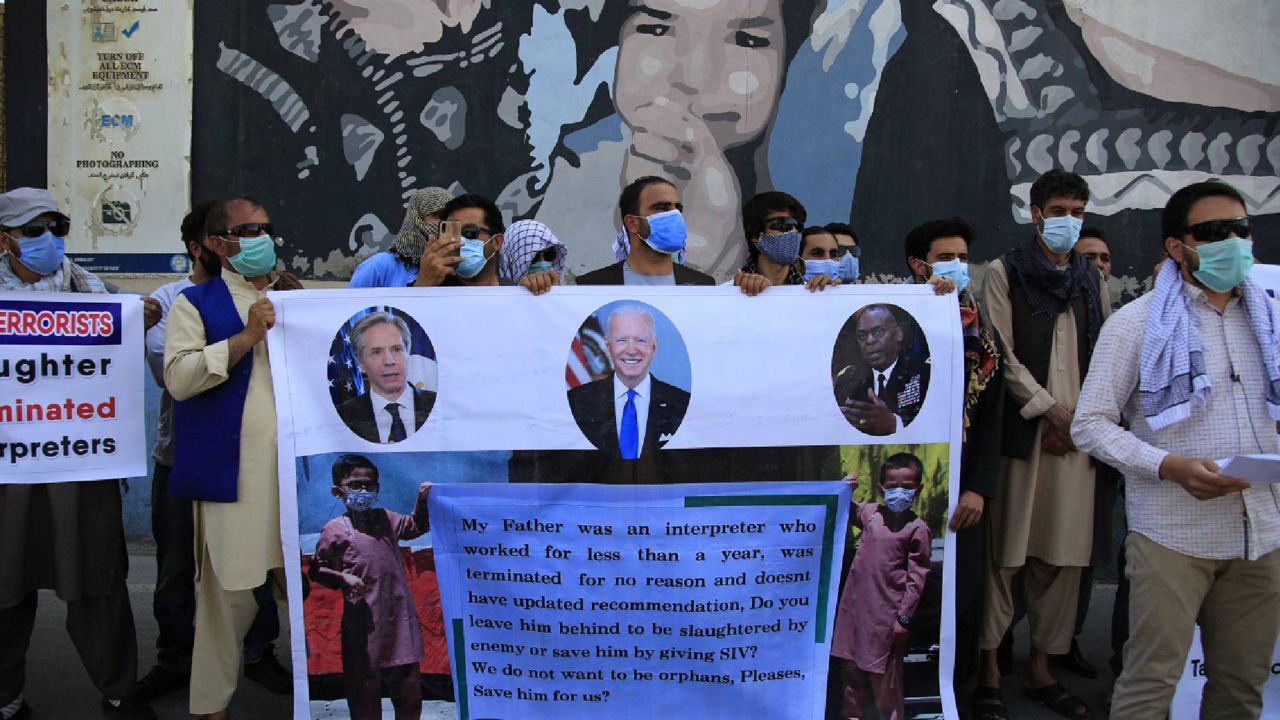As the U.S. prepares to evacuate thousands of Afghans who aided the United States in combat, details about the evacuation’s timeline, scope and destination remain undefined as a strategy unfolds to protect the allies from Taliban attacks after American soldiers leave Afghanistan.
Advocates, bipartisan groups of lawmakers and veterans have called for the evacuation of Afghan allies for months, citing the Taliban death threats that military interpreters and others receive because of their work for the United States. The reality of those threats has sharpened as the American presence in Afghanistan recedes.
“It's good. It's about time. We know, for many, it's too late,” said Betsy Fisher, director of strategy at the International Refugee Assistance Project. “The best time to plan this would have been a few years ago. The second best time is now.”
Administration officials have confirmed that the U.S. will evacuate “a group of applicants” among the 18,000 Afghans who have already applied for a Special Immigrant Visa (SIV) to come to the United States, though the exact number is unclear. That group’s evacuation will also include their immediate family members, who account for another 53,000 people.
The evacuation will include translators who served alongside U.S. soldiers — who make up the majority of people in the visa pipeline — plus “other at-risk categories,” White House Press Secretary Jen Psaki said Friday.
“They will be relocated to a location outside of Afghanistan before we complete our military drawdown by September, in order to complete the visa application process,” Psaki said.
Now, lawmakers and officials are turning their attention to the specifics of the evacuation plan, while advocates call for a broad scope around who’s included, a safe and effective destination, plus execution of the plan well before the military’s September withdrawal.
The U.S. could choose to secure Afghan allies either in a third country or a U.S. territory like Guam, where local officials say they’re prepared to help.
Chris Purdy, a veteran and the project manager for Veterans for American Ideals, explained that choosing U.S. land like Guam may help expedite visa processing for Afghans right off the bat.
“Start processing the initial round of paperwork. Do your health checks, you can finalize some security checks, then ferry people off of Guam to locations around the country,” he said.
“There's infrastructure, there's open hotel rooms, and they can be treated as guests, not detainees,” he added.
Pentagon Press Secretary John Kirby said Thursday that the administration still had “lots of options” when it comes to location and that the details were still in the “planning stages.”
If the evacuation instead takes Afghans to a third country, advocates have warned that it should come with a guarantee of humanitarian protections while their visas are processed, such as temporary asylum.
“What's important is that the place be safe for the applicants, that they have rights there,” Fisher said. “We would need to make sure that those people aren't going to be forcibly returned to Afghanistan.
As far as which part of the government is overseeing the evacuation efforts, Kirby confirmed that the State Department is still in the lead, as they have been with visa processing.
But, he said, “it's going to take a whole interagency effort to do this,” promising that both the Pentagon and Department of Homeland Security would be involved.
However, Kirby also noted that military planes are not the only option for airlifting Afghan allies out the country.
The group Human Rights First, along with veteran and Congressman Seth Moulton, D-Mass., has outlined their own vision for a detailed evacuation plan online, which includes options like military aircraft, charter planes or passenger planes.
The scope of the evacuation is critical for interpreters like Omid, who spoke to Spectrum News from Kabul earlier this month — he was initially denied a visa because he was fired from his interpreter job when he failed a routine polygraph test.
But Omid said that his termination doesn’t matter to the Taliban, who still ask his family members about his location, while he stays inside as much as possible.
“They call all the Afghan interpreters ‘American spy,’” he said. “If the Americans withdraw from Afghanistan even for a minute, I cannot guarantee I can be alive.”
He recently appealed his case in April.

A spokesperson for the National Security Council would not confirm that interpreters like Omid would be included in an evacuation.
Instead, they told Spectrum News that 50% of the 18,000 SIV applicants are in the very first step of the process, pending their own submission of documents.
“In other words, approximately 9,000 of these applicants need to take action before the U.S. government can begin processing their case,” the NSC spokesperson said.
A group of former interpreters, including Omid, held a protest in Kabul Friday, calling for U.S. officials to soften the requirements for visa approval, including by considering Afghans who were fired from their job and by reducing the required length of employment from two years to six months.
“Everyone who has applied for an SIV visa, at whatever stage of the process they are, they should be on a plane by September,” Purdy said. “There are a myriad of reasons that people can be denied a visa and then, on appeal, that denial’s rescinded.”

“We have been planning for quite some time,” Department of Defense spokesman John Kirby said Thursday of an evacuation, something defense officials had confirmed publicly in previous weeks.
The White House is now coordinating the details, but they did not provide a projected timeline when asked.
“We’ve already begun the process. Those who helped us are not going to be left behind,” President Biden told reporters Thursday.
Advocates have called for the movement of allies to begin as soon as possible, well before the U.S. military leaves in early September.
And, they say, timing also matters after Afghans are relocated, since processing their special visas usually takes an average of three years.
“Hopefully there's a lot of thought and consideration going into how to make sure that these people are able to arrive in the U.S., to a place where they have lasting status and the ability to build their lives as soon as possible,” Fisher of IRAP said.
Advocacy groups and lawmakers plan to hold a rally in front of the White House on July 1 to urge a speedy and inclusive evacuation.




